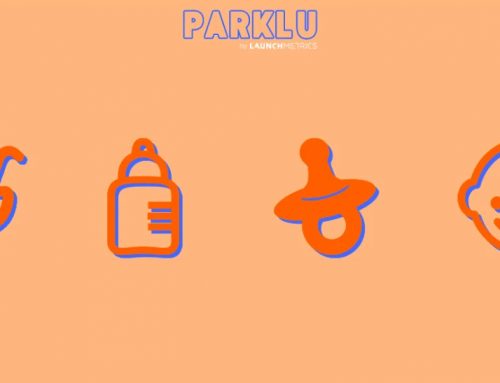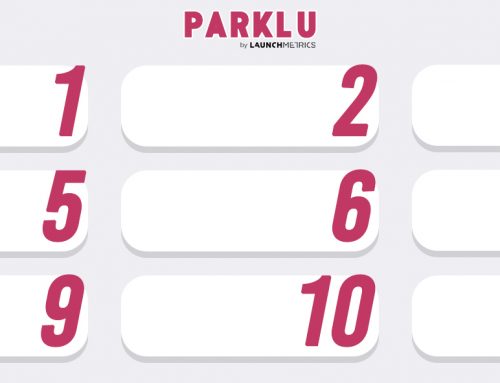Online influencers have a billion-dollar industry behind them, but it wasn’t always this way. Now brands are asking if they can lock-down high-performing KOLs just for themselves. However, many brands forget that KOLs want to be treated like people, not commodities.
The following article was originally published in theINSIDER 500 KOL Catalogue.

Kim Leitzes is the co-founder of PARKLU, a platform that connects brands around the world with social media influencers in China. Before PARKLU, Kim joined high-end women’s retailer Bill Blass New York as Vice President of Strategy and then Macklowe Asset Management, investing exclusively in consumer and retail companies.
Hiring a KOL for a campaign used to be revolutionary — now it’s necessary. Some marketers are starting to hire influencers for their brands year-round, utilising an always-on KOL marketing strategy.
But not everyone has caught up. Many marketers don’t maintain their relationships with KOLs after campaigns finish. In a sense, they use them temporarily as a tool.
Basically, brands don’t — and often can’t — treat KOLs like regular partners. They’re seen more like lone-wolf hired-guns. Since KOLs, by definition, are in the business of creating their own content first, this categorisation makes some sense. However, can brands and KOLs find a middle ground? Or will KOLs continue being a new, distinct cultural phenomenon unbound by the constraints of traditional advertising?
The inaugural issue of theINSIDER will try to answer these questions. Let’s start by asking the question marketers are all asking: Can brands get loyalty or exclusivity from online influencers?
Here are two things to consider.
Exclusivity fundamentally fills KOLs out. While most traditional celebrities get paid to act, sing, or play sports, many KOLs’ bread-and-butter is product reviews. While it’s possible to rep one product without having your fans stop trusting you as a consumer goods gatekeeper, long-term partnerships are definitely tricky for KOLs. And with marketers generally managing KOL campaigns from an arms-length distance, this kind of relationship seems unlikely.
On the other hand, we’re seeing a boom of online influencers launching their own brands. Lin Forever, who leveraged her 4 million Weibo and Yizhibo fans to drive traffic to her own brand, Lin Limited Edition, is just one example and can be found in the fashion section of the catalogue. It’s clear this is not just about money for them, but also about the personal fulfillment of running a business. And KOLs like Lin continue being popular live-streamers, reviewers, and bloggers after becoming tied to one product-line forever — that is to say, their own. In theory, why can’t brands who work hard to earn loyalty — not just buy it — work with influencers long-term as well?
Without further ado, I’m happy to have a panel of experts open theINSIDER by tackling this question.

Josh Steimle is the founder of Influencer Inc, a publishing, training, and events company that helps executives, entrepreneurs, and working professionals become influencers and thought leaders. He is the author of Chief Marketing Officers at Work and over 300 articles in publications like Forbes, Fortune, Inc., Mashable, and Time.
I’ve seen multiple cases in the B2B space where brands have successfully implemented long-term, exclusive relationships with KOLs, so I know it can be done, and I expect to see more such programs in the future.
One example is IBM’s “Futurist” program. IBM reached out to business book authors, social media experts, and other business KOLs and invited them to participate in events and activities where they are interviewed and provide insights relevant to IBM’s customer base. IBM’s genius move was to give these KOLs a title, Futurist, that the KOLs were proud to advertise in their bios and often as a key part of their own titles on LinkedIn, bylines in articles, etc. Futurists get the credibility that comes by being associated with a well-known brand like IBM, and IBM gets their insights and the credibility that comes by being associated with industry leaders at the forefronts of their respective fields of expertise.
Huawei also has a KOL program, with selected KOLs being “published experts reaching audiences via online blogs, academic papers, media titles and other relevant industry reports”. One unique aspect of Huawei’s KOL programme is that they are not paid engagements. Huawei pays for travel accommodations when KOLs participate in Huawei events, but nothing more. Huawei KOLs have expertise in internet communications technology (ICT), with a focus on business-to-business (B2B) ICT. Rather than targeting hundreds of KOLs, Huawei has recruited 30 advocates, utilising tools like Klear to evaluate and track the social media presence of their KOLs. Klear provides real-time monitoring and analysis of Twitter, Instagram, YouTube and blogs worldwide, and is the foundational tool that provides the programme with an Influencer Score to quantify KOLs’ influence.
Obviously, these brands are well known and can leverage that recognition in place of payment. Smaller brands would likely need to provide more than simple brand association to create an incentive strong enough to attract reputable B2B KOLs, but these programmes need not be terribly expensive and may not require any cash payment. If you are considering a B2B KOL programme, some incentives you can offer include:
• Travel.
• Events at which KOLs can meet and network with other KOLs.
• The opportunity to speak to your company. For example, if a KOL is an expert on social media marketing, invite her to give a presentation to your marketing team. She can add this to her speaking CV. If you record video and allow her to use this video in her promotional materials this is one more way both she and you win together with greater exposure.
• VIP access to other events your company may host, such as an annual customer event. Promote these KOLs at these events by having them speak so they can benefit from the exposure.
Some common mistakes companies might make implementing a B2B programme include:
• Controlling the message. KOLs should be free to be honest in their opinions, otherwise, they will become frustrated and their audiences won’t believe them and you lose the value of the relationship. 10 positive mentions become more believable when mixed with one negative comment.
• Don’t over-schedule KOLs at events. They need time to blog or take video, mix with other KOLs, and do what you want them to do as KOLs.
• Treating it as short term. If you treat the relationship as a long-term investment, rather than a short-term transaction, the KOLs will respond in kind.
Joel Backaler is a global marketing strategist, author, and international keynote. He is the Managing Director at Frontier Strategy Group, a member of the National Committee on US-China Relations and author of the forthcoming book Digital Influence: Unleash the Power of Influencer Marketing to Accelerate Your Global Business (Palgrave Macmillan, September 2018).
It is possible for brands to get loyalty or exclusivity from KOLs, but it isn’t easy.
When you think about it, an influencer is a brand – a personal brand. Therefore, when a corporate brand wants to collaborate with an influencer, it’s really two brands trying to come together. Those two brands could have very different values or ways of engaging their target audience, which can complicate things.
For example, a corporate brand may want too much control over the influencer’s content, which can be a serious source of friction. The moment an influencer produces content that is inauthentic to his or her personal brand, their audience will turn on them. There’s a good case of this from a few years back when Volvo Cars collaborated with fashion and motherhood influencer Chriselle Lim to promote a new eco-friendly car-wash solution. Her audience immediately attacked Lim for “selling out”, referencing recent posts that highlight Lim’s non-eco-friendly lifestyle.
For a long-term exclusive partnership to work, the corporate brand needs to provide the influencer with: substantial freedom and autonomy to produce content, exclusive experiences that build the influencer’s natural affinity toward the brand, as well as financial compensation (where appropriate) to ensure the influencer does not forsake potential earnings from missed opportunities to collaborate with a competitive corporate brand.
Another major consideration that will impact an influencer’s likelihood to remain loyal/exclusive to a corporate brand is the influencer’s long-term goals. As influencers gain more and more influence and learn about the likes and dislikes of their loyal followings, some influencers choose to develop their own branded product lines. There are already plenty of case studies out there that provide influencers with a blueprint to forge their own path rather than rely on a corporate brand’s existing platform.
Some examples include:
• US: Michelle Phan’s Ipsy
• Italy: Chiara Ferragni’s The Blonde Salad
• China: Zhang Dayi‘s Taobao Store “The Wardrobe I Like”
However, not every influencer aspires to develop their own line of branded products. For starters, operating a cosmetics or clothing e-commerce store, for example, is another full-time job that comes with all sorts of challenges that many influencers may not want to deal with. Influencers may simply prefer to continue to focus on their passion – creating engaging content for their loyal audiences. This is where a long-term partnership with a brand that an influencer genuinely enjoys could be a good fit. But again, it won’t be easy.
Stella Yuan is the Eastern China Senior Retail Manager of Estee Lauder. She has 10 years of experience working with Chinese influencers and is based in Shanghai.
Businesses have been increasingly trying to leverage the personal influence of KOLs, but as far as I’m concerned, high-value KOLs must ensure their personal image is independent.
Therefore, I don’t think it’s even necessary for brands to acquire KOL loyalty.
Influencers must maintain a positive image. That means personal confidence, sincerity, and the ability to increase followers. Many of these aspects entail uncertainty, so it’s difficult for brands to sign up for the long-term as well.
Uncertainty is the key word here.
The fourth wave of the Chinese consumer goods industry has no fixed template for success. Global companies increasingly set their aim for China with plans
to enter. Consumers increasingly demand personalisation. Brand attachment is going down.
As consumers themselves, KOLs feel emotional connections to brands, and like regular people, their emotions evolve.
Imagine any industry where brands and KOLs all have established loyalty. The independent, objective professional image of influencers will vanish.
In other words, KOLs risk a lot by being tied to one company.
However, as is often the case, success talks. Brands with active positions in their market can be enticing. It’s easier for brands with stronger backgrounds, more capital and more market operations to acquire KOL loyalty. KOLs can use the brand’s positioning, influence, and market activity to enhance the value of their own personal brand.
If a brand really wants to work closely with a KOL, they have to understand the serious commitment involved. That means good public relations, a dedicated influencer marketing team, and — of course — great communication. A sincere relationship can foster loyalty, and building one is a long-term task.











Leave A Comment